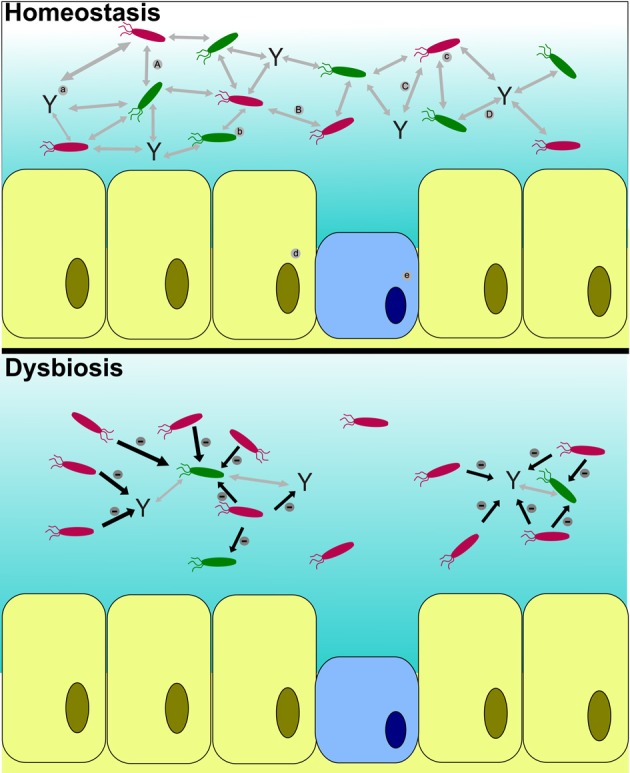Figure 2.

Host microbiota interactions during homeostasis and dysbiosis. The host is able to control the pathogen (c) growth by different process (A,C) involving the immune response (a) and the resident microbiota (b). Furthermore, the immune response recognizes the resident microbiota (D) as non-pathogenic bacteria. Pathogenic bacteria auto-regulate abundance via quorum sensing (B) and can detect environmental signals from host cells [epidermic cells (d) and mucous cells (e)]. During dysbiosis, the pathogenic population, triggered by the stress response of the host (diminution of the immune response, production of mucus and diminution of the abundance of the resident microbiota), overcome the immune response and outcompete the resident microbiota.
